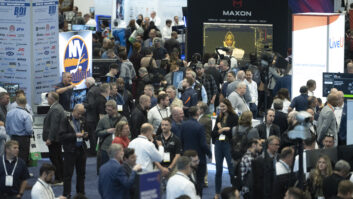The author is co-founder and EVP, sales and marketing of Vertical Bridge.
With rising power costs, limited maintenance personnel and challenging technological and regulatory hurdles to navigate, broadcasters are looking to streamline their tower operations and are rethinking the need to own towers at all.
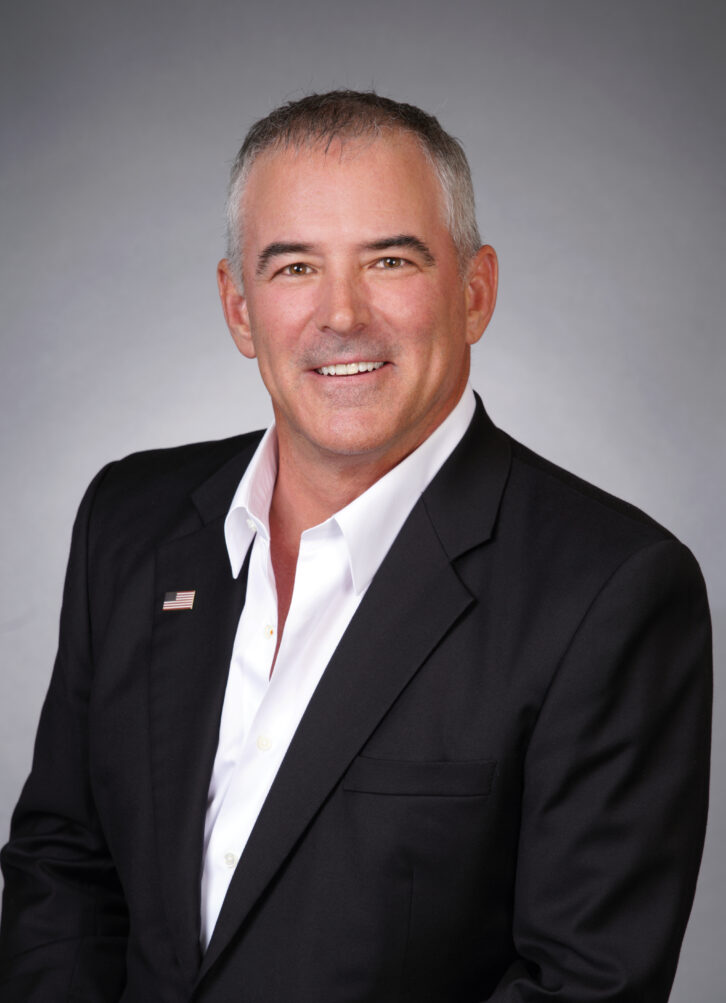
Vertical Bridge, the largest private owner and operator of communications infrastructure in the U.S., worked with perhaps the largest radio station broadcaster in history to provide a custom business solution in one of the most challenging markets. The project’s success is a model for other markets and broadcasters.
South Mountain
The antenna farm on South Mountain in Phoenix, Ariz., was established in 1955 when the Federal Communications Commission began to grant licenses for FM radio broadcast stations. The FCC identified South Mountain as an ideal location due to its high elevation and central location within the Phoenix metropolitan area. The 17-tower “farm” has grown to become one of the most recognized in the country.
Two and a half years ago, the owner of eight stations in Phoenix was broadcasting from three towers on South Mountain. Today, with the help of Vertical Bridge, those towers have been removed and the company has been able to consolidate its operations into a single modern, energy efficient tower.
Working with Vertical Bridge, the broadcaster chose to lease space on this tower instead of continuing to own and operate the old ones. By removing the responsibility of servicing, renovating, engineering and maintaining the tower assets, Vertical Bridge enabled the company to free up working capital and do what they do best: focus entirely on growing their programming and advertising revenues.
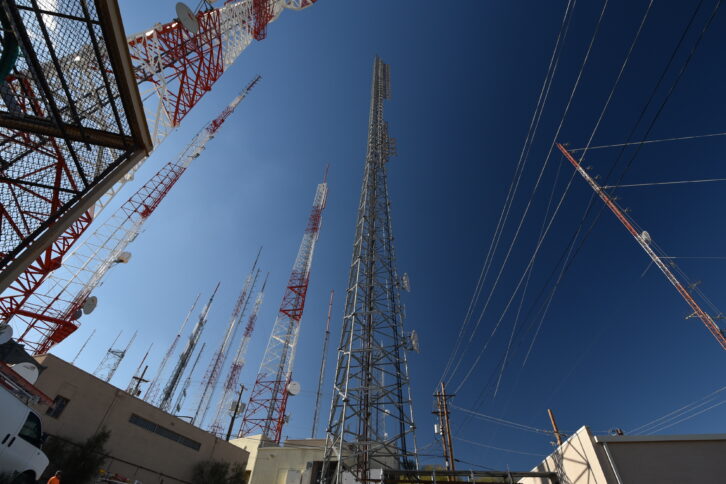
Starting during a pandemic
The broadcaster and Vertical Bridge started the project in 2020 when the pandemic had taken a toll on the industry. Ad revenues were down, costs were increasing and trained personnel were scarce. A new solution was needed, and the companies came together to lay the groundwork for a new business model.
“Since COVID, everybody’s seen the change in the economy. We’ve seen inflation go up to 9-plus percent, which has strangled a lot of broadcasters,” said Gary Hess, vice president of broadcast and leasing for Vertical Bridge, adding, “A lot of broadcasting is talk radio. During COVID, without sporting events, they had nothing to talk about. For more than a year, that meant no advertising.”
Realizing it would be a difficult task with lots of moving parts, the big broadcast group chose to partner with Vertical Bridge, which had a reputation for moving nimbly and overcoming nearly impossible challenges. The broadcaster’s engineer met with Mark Stennett, director of broadcast engineering for Vertical Bridge, who mentioned that he would like Vertical Bridge to consider acquiring and replacing the tower pole that one of his stations was on because it was no longer structurally sound and unsafe to climb. “The conversation was relayed to the broadcast leasing team and quickly grew from there,” said Stennett, adding, “It grew and evolved through a couple of iterations before finally becoming what you see today.”
The project objectives were threefold: First, to consolidate the broadcaster’s stations onto one new tower. Second, to build and engineer the new tower. And third, remove the three old towers.
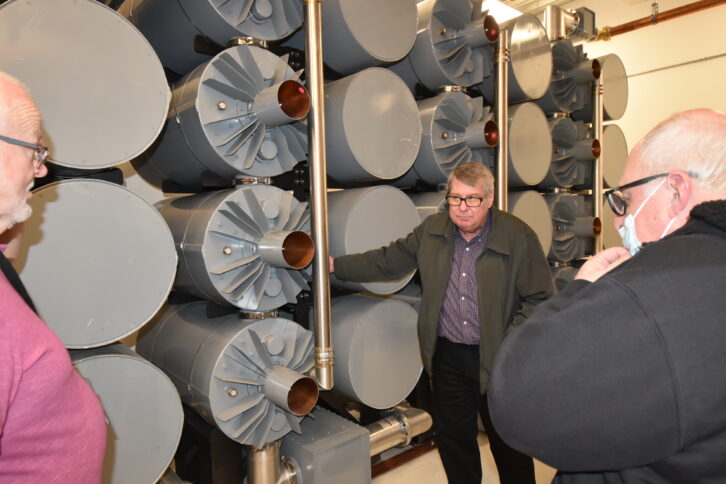
[Read More Guest Commentaries Here]
Working with municipalities
With over 16,000 acres of pristine nature and 58 miles of trails, South Mountain is beloved by the city of Phoenix and its residents. There were many ordinances and committees to coordinate and clear before the removal of the existing towers could be considered. In addition, those same ordinances, committees and many more federal mandates had to be considered before erecting a new structure. From radiofrequency considerations to structural/engineering guidelines and environmental preservation, there were ample legalities, policies and restrictions to work through.
“South Mountain is zoned by the city of Phoenix under the city’s parks and recreation department, which presents a challenging regulatory environment,” Hess said.
“With various lockdowns and government resources focused elsewhere in 2020 at the height of the pandemic, we faced considerable slowdowns.”
If that weren’t enough, at a critical time during the project, the city government had a complete changeover in leadership, meaning key relationships and processes had to be rebuilt. The Vertical Bridge team persevered and the project was completed in just two and half years.
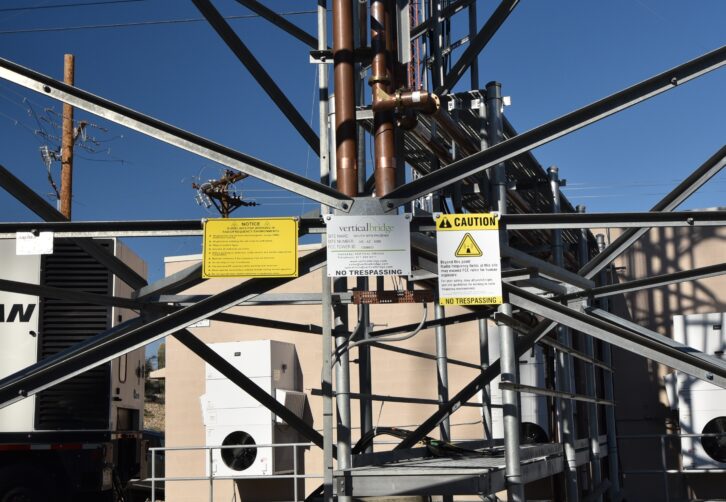
Difficult spaces and terrain
One of the most difficult challenges in taking down the old towers and building the new one was the limited amount of space in which to maneuver.
“Everything was jam-packed in a small lot,” said Joe Meleski, Vertical Bridge vice president of broadcast leasing. “The access route was a winding pathway just big enough for three people to walk shoulder to shoulder. It was barely the width of a car, and we needed it to accommodate big cranes and trucks passing to and from the work site.”
To access the site with heavy equipment, Vertical Bridge widened the access road. Then after removing the old towers and the equipment on and around them, the area was much easier to work in and much safer for the RF engineers, technicians and tower climbers.
The new structure features a 16-bay ERI antenna with three auxiliary antennas. Five FM stations operated into an ERI combiner, which also has three open slots for possible future tenants. The site hosted a chapter meeting of the Society of Broadcast Engineers in December, from which the accompanying photos were taken.
Efficiencies gained
“We provided a modern solution to an age-old problem for broadcasters: How do you manage old towers as you continue to build new ones?” Meleski said.
This project brought several benefits for the environment, for the stations and for Vertical Bridge, the most noteworthy of which were operating efficiencies and environmental sustainability:
- New, more energy efficient broadcasting equipment.
- Reduced environmental footprint.
- Less traffic on the mountain to maintain the tower site.
- Shifted maintenance responsibility for five towers owned by the broadcasting conglomerate to a single modern tower owned and operated by Vertical Bridge.
“The new tower is pumping out a half a million watts right now as we speak,” Hess said. “It has room to get up to 800,000 watts on the main system and is much more efficient than its predecessors.” The broadcast client is the only tenant on the tower at present, but this is a multi-user facility that has additional capacity.
The success of the project in one of the densest antenna farms in the country is proof of a new business model where radio and television stations consolidate and upgrade towers by partnering with an experienced company that handles maintenance and operations.
By working with broadcasters through their various unique challenges (e.g., pandemic, miniscule construction site, challenging regulatory regime, etc.) the Vertical Bridge team can deliver more efficient and longer-lasting solutions for broadcasting companies.












